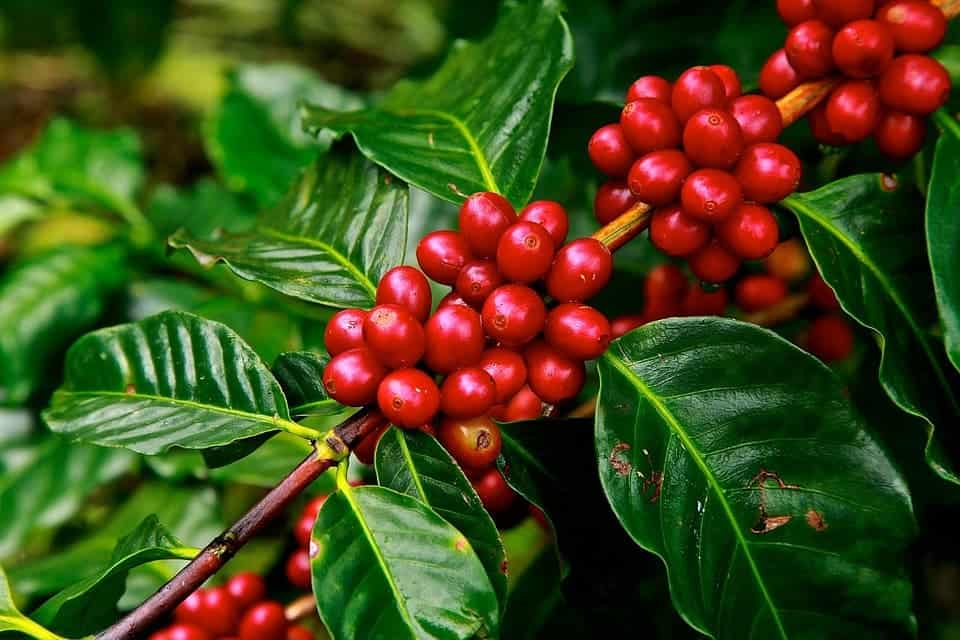New research finds that the world’s largest coffee-producing areas could shrink by a whopping 88 percent by 2050, due to climate change.

Coffee black, two sugars, one climate change
This is a bad one. Coffee, one of the world’s most cherished beverages, could soon become a scarce commodity if we don’t take action, researchers say.
David Roubik, an entomologist and senior staff scientist for ecology, behavior and evolution at the Smithsonian Tropical Research Institute in Panama, analyzed how climate change will affect coffee growers, and the results aren’t good.
Coffee only grows at specific temperatures around the tropics, which innately makes it vulnerable to shifting temperatures. As is the case with other fussy crops (such as grapevine, for instance), growers will be forced to move either to higher altitudes or relocate to cooler places. But that’s never easy, and sometimes, it’s impossible to recreate the conditions you started with. You might end up with a similar temperature, but different soils or rainfall. Furthermore, in many parts of the world, relocation is simply not an option. For instance, countries like Nicaragua, Honduras, and Venezuela just aren’t mountainous enough, so farmers can’t really move higher.
These regions “are less mountainous, so that coffee and bees have fewer options to move uphill,” Taylor Ricketts, the director of the University of Vermont’s Gund Institute for Environment and a co-author of the recent study, told Business Insider.
This will threaten not only global coffee production but also the livelihood of many farmers.
The scenario repeats itself in several parts of the world. Coffee farmers will have to move, but in some places, they just won’t be able to. While similar things will happen for many crops, coffee is particularly vulnerable.
There are two varieties of coffee: “robusta,” which as the name says, is more robust and tolerates a wider range of soils and temperatures, and “arabica,” which is way less tolerant. The problem is that the more resilient robusta isn’t anywhere near the arabica, so people enjoy starting their day with an arabica, putting a lot of stress on already challenged environments.
It’s not just the direct effect of climate change. Indirectly, coffee growers will be hit even stronger, due to the impact rising temperatures will have on pollinators.
The bee’s knees

We often talk about the “bee problem” — how bee numbers are going down year after year, with no clear solution in sight. But we don’t often consider that the bee problem is also our problem. Bees are the unsung heroes of our day to day meals, pollinating much of what the world eats; and drinks.
Coffee is also greatly dependent on bees to pollinate it, and this is one of the reasons why previous predictions were so inaccurate, Rickets and Roubik say: they failed to consider the effect of pollinators. Taking this into account and looking at several climate change scenarios, researchers say things are way worse than we thought.
“Our results suggest that coffee-suitable areas will be reduced 73–88% by 2050 across warming scenarios, a decline 46–76% greater than estimated by global assessments,” the study reads.
So things get even more complicated for farmers: they not only have to ensure suitable available geographical areas for future crops, but also to ensure that these areas can serve as habitats for pollinator populations. Aside from a habitat, bees also need year-round pollen sources, other than the crops used by humans. If this doesn’t happen, then coffee productivity will go down severely.
“Coffee is one of those plants that can pollinate itself and does produce some fruit with no animals going between the flowers,” Roubik says, “but when you do have things carrying pollen between plants then production is quite a bit greater. The fruit is bigger and heavier if it is pollinated that way.”
Also, this doesn’t only refer to the honeybee, but also to other species — including a particularly nasty one. The invasive Africanized honey bee (Apis mellifera), more commonly known as a killer bee, can pose serious threats to humans, but it’s a great pollinator for many plant species in South America, including coffee. Farmers need to consider developing habitats even for such species if they want to enjoy rich crops.
It’s not all bad. Growers can ensure the sustainability of their business, but they need to consider coupled effects of climate change on crop suitability and pollination. Authors note forest conservation, shade adjustment, crop rotation, or status quo as significant strategies to ensure this goal.
However, they add, there is more bad news than good. Even under optimistic scenarios, coffee diversity will dip by more than 10%, and under less optimistic scenarios, things will be much worse. This doesn’t only mean that coffee will become more expensive and less available, but that many millions of people might lose their livelihood.
“Coffee is grown by roughly 25 million farmers in more than 60 tropical countries worldwide. In all, probably 100 million people are involved in its production, most of them rural and poor,” said Ricketts.
“Climate change threatens the primary livelihoods of millions of people.”
Journal Reference: Pablo Imbach et al. Coupling of pollination services and coffee suitability under climate change. doi: 10.1073/pnas.1617940114
Was this helpful?



